

Prior Episodes | 7972 (5 BBY) | Next Episodes
Continuity & Analysis
Andor - Aldhani (2022) [S1E4]
Out of options, Cassian is recruited for a dangerous mission to infiltrate an Imperial garrison.
Andor - The Axe Forgets (2022) [S1E5]
Cassian must carefully navigate the distrust inherent in being the new member of
a secret operation.
Andor - The Eye (2022) [S1E6]
With cover from a spectacular local festival, the Aldhani mission reaches a point of no return.
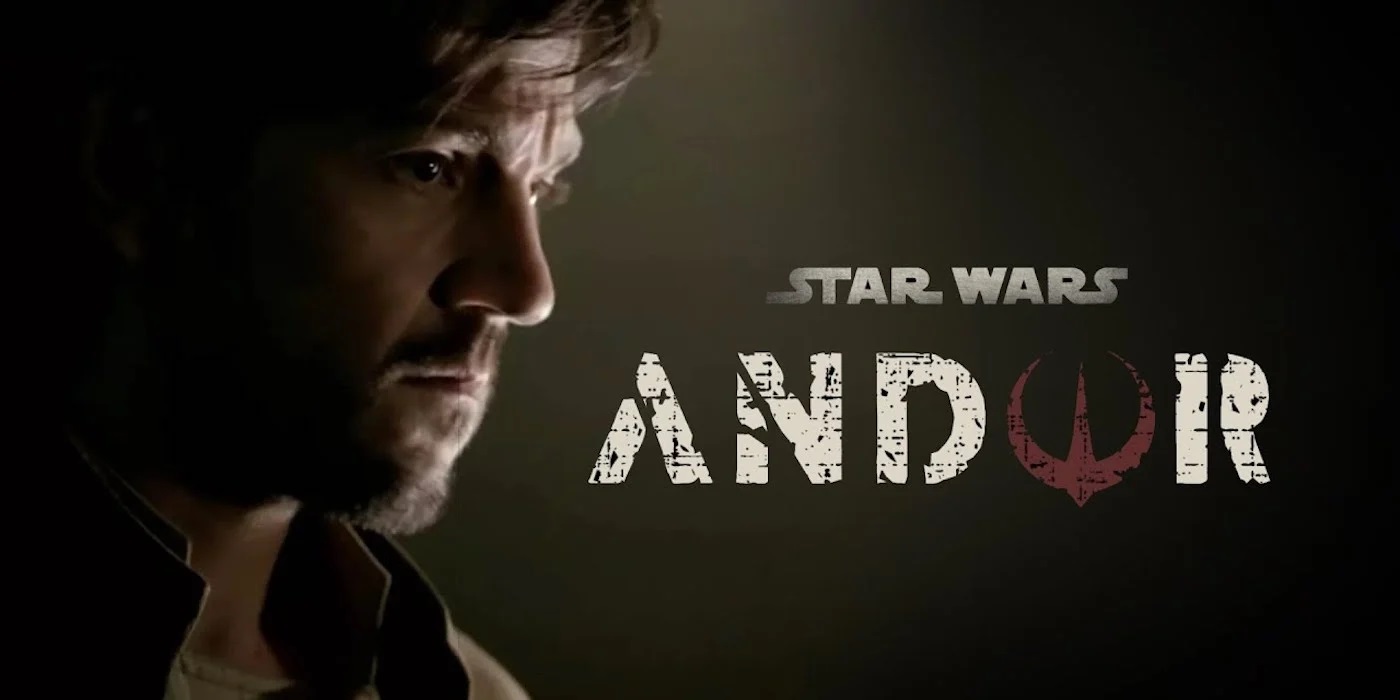

CONTINUITY
These three episodes deal with the Aldhani operation. The planet Aldhani and the moon
Frezno are seen for the first time. Four worlds are the setting of these episodes:


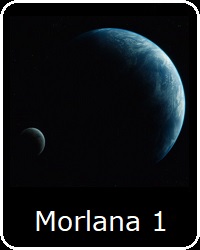
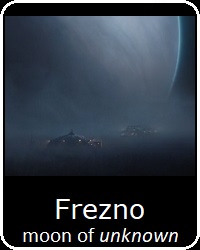
- The 'Fondor' droid co-pilot integrated into Luthen's ship can calculate safe hyperspace coordinates unusually quick. This may be an indication of
its ability to understand their objectives and anticipate, as well as the expensive and unusual equipment which Luthen has at his disposal.
Main Article: Hyperspace Travel
- Med nog is a liquid substance which aids healing. It is apparently strong, and taking more than "just a sip" is not recommended.
- The disorganized Rebellion is already somewhat notable, and known to be factionalized by political philosophy. Active groups at this point include
the unofficial Rebel Alliance, various Separatist resurgents, unaffiliated guerrilla movements, and the Partisan Front. The P.F. may be related
to, or the same as, Saw Gerrera's Partisans, likewise another group later mentioned called the Partisan Alliance, however this is still vague.
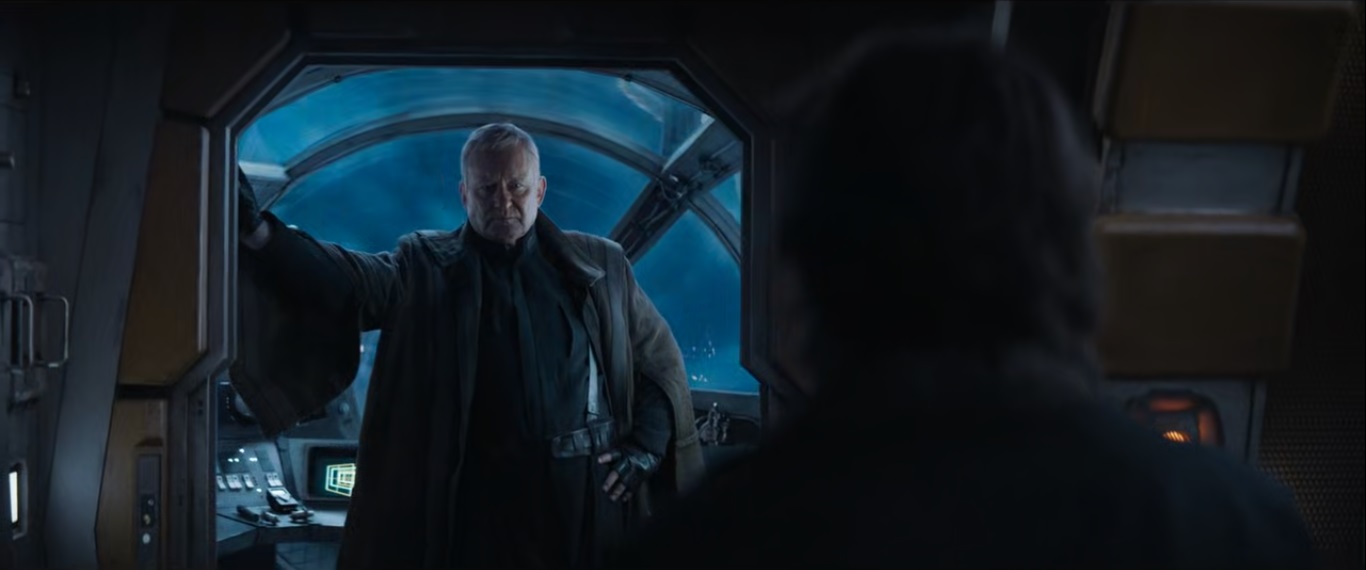
- Cassian "fought in Mimban when I was 16" when he was "straight out of prison" and was there for 6 months. Cassian was born in 7944 (33 BBY)
according to supplementary material. This means he was 10 years old during the flashback sequences in the first three episodes of this series,
set in 7954 (23 BBY), and that Cassian was on Mimban in 7960 (17 BBY). The indicates that the rebellion on Mimban began fairly early in
Imperial rule, and was still resisting successfully 7 years after Cassian was there, seen in Solo set in 7967 (10 BBY).
- Cassian says that it turned out "we were fighting ourselves", and Luthen says "the Empire had you fighting each other." Only 50 members of his unit
managed to survive, a high rate of attrition in only 6 months of a conflict which will last for most of a decade. As seen in Solo, those in
the Imperial military spend a great deal of their time fighting each other, whether that is the uncompromising, restrictive, and unfriendly
nature of life in the Imperial military, struggling with each other for rank, glory, and recognition, or forcing unhappy enlisted soldiers like
Han and unwilling conscripted soldiers to fight for a leadership which doesn't value their lives, for objectives which are not worth dying for.
The Empire is fighting to win battles and objectives, but is not interested in bringing conflict to an end. The constant warfare and armed
struggle promulgated by the Empire serves to keep people at each others throats, and to give those in the galaxy who are violent and
adventurous something to do that does not threaten the Empire. A conflict like the war on Mimban is one which the Empire knows it can
win at anytime if it wants to, either by devoting overwhelming resources or simply reducing the civilization on the planet to dust from orbit.
The Empire's goals and philosophies seek to employ oppressive means, which brings great control but also creates the problematic
counterforce of rebellions. The Empire puts this to political use to justify its massive military, then sends the most martially inclined in
the galaxy along with great masses of the poor and the prison population to fight against the most violently rebellious in the galaxy.
This keeps many millions of the galaxy's most troublesome people fighting each other for the sake of fighting, posing no threat of uniting
against Imperial rule. War is therefore a means, an end, and a way of life for the Empire as both a government and a society.
Main Article: Darth Sidious and The Plan
- Luthen's rebels intend to steal "the quarterly payroll for an entire Imperial sector." This horde of 3 months of pay is being stored in the armory at
the Aldhani Garrison, a small Imperial base used primarily for logistics and secure storage, which is protected by a nearby starfighter base.
It is safe to assume this was the quarterly payroll for Imperial officials in the Cademimu Sector where Aldhani is located. Aldhani is certainly
not the capital of the sector, so the storage of the payroll on this world must be for sensible security purposes. This is reinforced by
the remote location of the base in which it is stored, which lies in an area that was forcibly depopulated by the Empire.
- The Imperial Security Bureau's headquarters is on Coruscant, as would be expected. This organization was created in SW legends and subsequently
made part of canon in the disney series Rebels. The ISB is a paramilitary state police and intelligence organization. ISB officers wear distinctive
white dress uniforms, which are worn by specific groups within the regular military, however they are most commonly associated with the ISB.
The ISB is an independent organization separate from the military which reports directly to the Emperor and the Imperial Council. Its mandate
is state security, which in view of the Empire's military government makes them the Empire's federal police. Their mission statement indicates
their purpose is "to further security objectives by collecting intelligence, providing useful analysis, and conducting effective covert action."
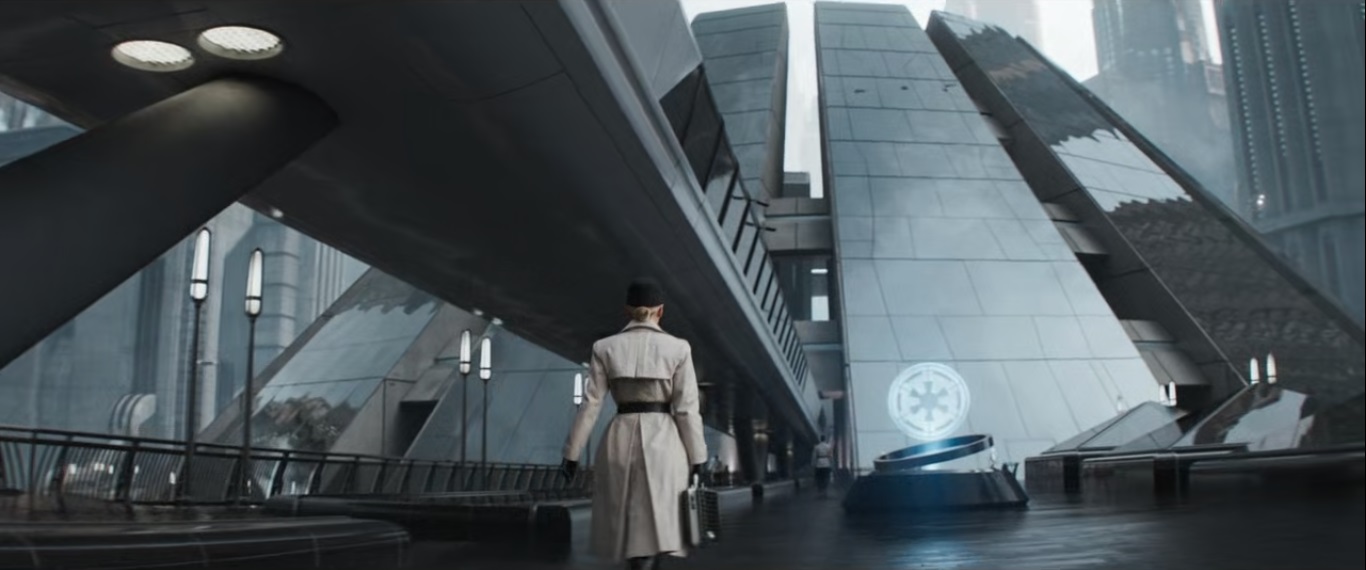
- The meeting seen at the ISB headquarters is led by Major Lio Partagaz who is the Chief Supervisor with 18 Supervisors under his command.
His Supervisors are primarily Lieutenants, with at least the one exception of Captain Lagret. This unit is referred to as the ISB board,
one of the subsections of the larger ISB organization, in this case responsible for operational oversight. Major Partagaz has designated
"sectors" of the galaxy, of which there are about 100, which are for ISB purposes only. These sectors each encompass several of the familiar
territorial sectors of the galaxy. Lt. Meero is in charge of ISB operations in 2 of these ISB sectors, one of which contains the Kurost Sector in
the Mid Rim where Sev Tok can be found, and the other containing the Thesme Sector of the Outer Rim, where Steergard can be found.
Lt. Blevin is in charge of 6 ISB sectors, one of which includes the Morlani System, within the Trans-Hydian region of the Outer Rim.
Captain Lagret was overseeing whatever ISB sector Arvala 6 is located in within the Outer Rim among his other sectors, although seems
to have possibly lost that sector from his portfolio. Lt. Grandi's ISB sectors include one which contains the Gaulus Sector in the Outer Rim,
as she mentions the Ryloth Sector which is a subdivision of that sector. Lt. Jung's ISB sectors include one which contains the sensitive
Abrion Sector in the Outer Rim, home to many secretive worlds and Imperial secret locations, including Scarif which he mentions.
Another of his ISB sectors contains Ord Mantell in the Mid Rim. This board's jurisdiction seems to be primarily in the Mid Rim and
the Outer Rim. It is possible there is more than one ISB board, with the others covering the interior galactic regions.
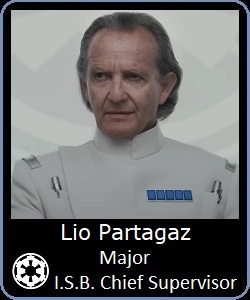
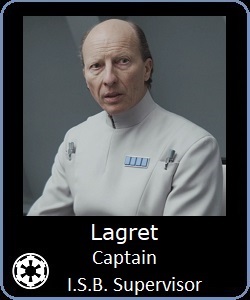

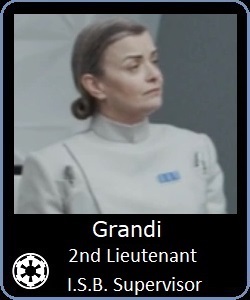

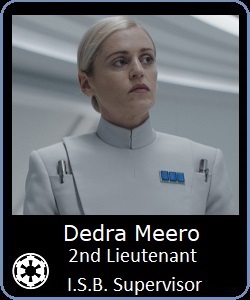
- The unrest on Ryloth which began on a small scale immediately after the Empire was founded has continued to grow, and will continue to until
the fall of the Empire. Detention estimates are "expected to increase across the Ryloth sector" in just the next few months, and plans are
already being made to deal with "further erosion in local authority." There has been unrest on Arvala 6 which met with a corresponding
Imperial military response, which has succeeded in bottling up rebel forces to the point that the Empire's mining activity has resumed in
the area under their control. This has created displaced refugees from those lands, which the Empire is now putting into "storage", assumed
to mean labor camps, Imperial industrial cities, or other forms of indentured servitude, however the planet's "Ministerial Director" has
not yet presented any solutions, which Major Partigaz suggests is due to their lack of competence. Ministerial Director may be a local ISB
position, some part of the military government's hierarchy, a position in one of the Empire's civilian authorities, or even a position in
Arvala 6's local, planetary government. There has also been an increase in ISB activity in relation to activities in the Abrion Sector, due mostly
to "an increase in construction shipments going to Scarif", which is primarily material for the completion of the Death Star's main weapon.
- Aldhani is a beautiful planet located in the Cademimu Sector, in the New Territories region of the Outer Rim. It has two average-sized moons,
a stable ecosystem, and ample water. The relatively simplistic ecosystem and moderately-sized, post-colonial population may be indications
of terraforming, however that is not conclusive. The population, primarily Humans, are referred to as Aldhanis, or Dhanis for short, whose
culture has developed the unique features typically seen on long-settled worlds, particularly those which are primarily agrarian, as a product
of their isolation and in response to adapting to suit the nature of their home. The settled continent of the planet has a highlands and
a lowlands region. The highlands host the Valley of Caves which is the Aldhanis' the "sacred valley" wherein can be found the unique caverns
formed by the "sacred river" Nasma Klain. The highlands used to contain hundres of settlements with a population of around 40,000 at
its peak, however they were gradually "cleared out" by the Empire who occupied Aldhani in 7959 (18 BBY), 13 years prior to these events.
The Empire took control of Alkenzi airbase, dammed the river, and established the Aldhani Garrison as "a depot for supplies, weapons,"
and valuables. They also established an "Enterprise Zone" in the Lowlands with factories, new towns, and housing, which is where
the former population of the highlands were driven. Aldhani scenes in these episodes were shot in northern Scotland.
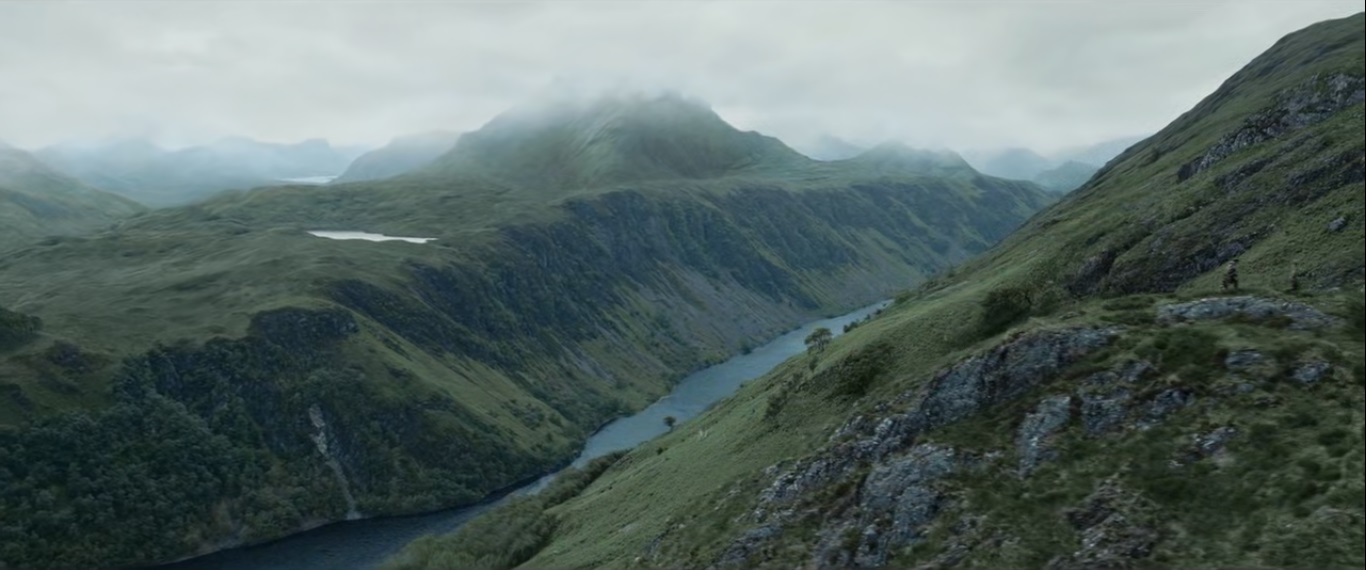
- Luthen's "Kuati Signet" is a piece of jewelry with a large blue kyber crystal, referred to as a "sky stone." The adjective Kuati indicates it originates on
Kuat, and Luthen says that it "celebrates the uprising against the Rakatan invaders." He estimates it could be sold for at least 50,000 credits,
however it is "worth more" to Luthen, probably because it recalls the successful and unlikely overthrow of a long-standing and oppressive
empire from ancient times. The invading Rakata originate in the Unknown Regions, and are believed to be among the first to develop
hyperspace travel. They used this technology to forge the Rakatan Infinite Empire which held isolated planets in many regions of the galaxy,
including Coruscant and many Human colony worlds in the Core, such as Kuat, which were already settled during the pre-hyperspace era
of Human exploration and colonization. The Aurebesh alphabet is widely believed within the SW galaxy to have been be a derivation of
the Rakatan script, however there is at least some debate about that point among historians in the galaxy due to its antiquity.

Lt. Blevin tells Karn that he has "rung the final bell on Corporate independence." Does this refer only to Preox-Morlana
or is this a general statement? His subsequent announcement that "as of this morning, the Morlana system is under
permanent Imperial authority" seems to imply the former and that it is only the Pre-Mor Authority which is being made
a direct Imperial dependency. A wider move against what remains of corporate fiefdoms would be more problematic
from a political standpoint, however the number of these domains and their level of independence has been steadily
whittled away over the course of Imperial rule, and the Empire is probably now ready to make such a significant final
move. If that were the case, a major corporate security failure could serve as the pretext for this. At the same time, this
incident on Ferrix was relatively minor, and certainly there must have been incidents where officers were killed and
criminals got away all over the galaxy which were not taken so seriously. It seems the Empire was waiting for an excuse to
take over in the case of Preox-Morlana, and that this would not be enough to affect the standing of other corporations.
- Jr. Lieutenant Heert is Supervisor Meero's attache, an ISB position with the title of Attendant. When searching for a report about the Ferrix incident,
Meero reads aloud "Varnisi. Unauthorized Imperial equipment, Ferrix, 0430. Ensign retrieved a sealed Imperial NS-9 Star path unit from
the site." It is unclear what "Varnisi" means. It could possibly be the name of the Ensign who retrieved the item, or his commanding officer
who wrote that report. Meero suggests that the stolen unit from Steergard gives her team jurisdiction as it was taken from one of her sectors.
- Three of the four moons of Coruscant can be seen when Luthen arrives at the capital system. Centax 1 and Centax 2 are smaller, lifeless moons, although
Centax 1 had been host to enclosed facilities at some points in history, which may still be the case. Centax 3 is habitable and inhabited, and
although it is covered in cities it has an ecosystem, bodies of water, and unlike Coruscant itself, undeveloped areas. Hesperidium, the fourth
and outer moon of Coruscant, is likewise habitable, and has long served as a close-by resort world for Coruscant's wealthiest citizens.
Hesperidium, Centax 3, and one of the two inner moons are visible during Luthen's approach.
- Taramyn Barcona, Karis Nemik, and members of the Aldhani heist team, have rifles that look like they were designed by Mikhail Kalashnikov.
Considering that Russia doesn't exist yet, and isn't located in this galaxy, this is an almost absurd coincidence. These blasters are really
stupid addition by the creators, since the purpose of a banana magazine is that it can hold more bullets without adding height to a gun.
Blasters do not use magazines, and their power cells are relatively compact. This blaster design does not make sense.
- Syril Karn arrives on Coruscant at one of the hundreds of thousands of spaceports on the city-world. The public address announcement indicates that
"Telgordo Travel service to Hosnian Prime, Plexis, and Eufornis Major will now be departing from platforms 7-12 and 7-13. Do not join the line
without your boarding pass." The screen with spaceport information including a flight information display is also partially readable. Some of
what is written is either gibberish or are abbreviations for something unexplored. The flight information that can be seen seems to state what
gate a ship is assigned, its flight number, its status, and obviously the planet of destination or departure. Those planets which can be read on
this list include the previously seen Cato Neimoidia and Ord Mantell, as well as a litany of worlds from legends material and other non-canon
SW, which are now made canon. Balfron, Tepasi, Hosnian Prime, Foerost, Mawan, Plexis, Eufornis Major, Lanz Carpo, and Jonsior are all Core
worlds of note. Obroa-skai and Zeltros are both located in the Inner Rim. Cantonica is located in the Corporate Sector in the Outer Rim.
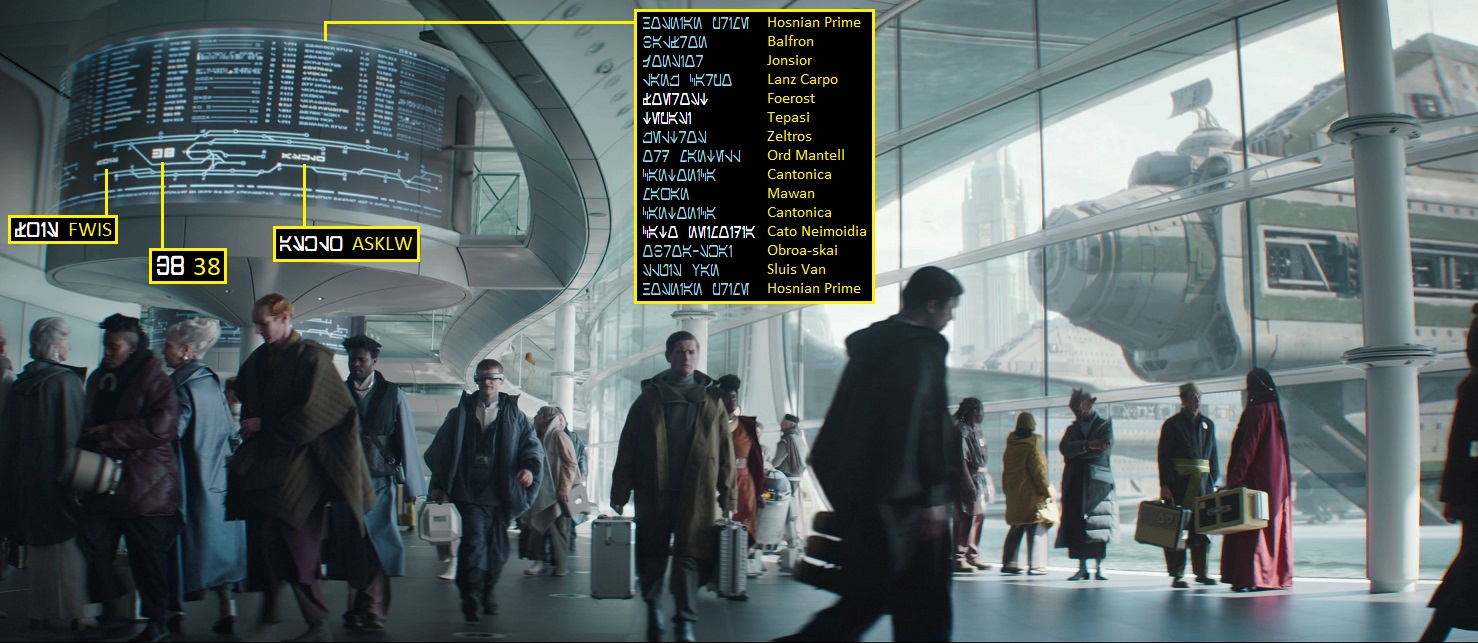
- Senator Mon Mothma was last seen chronologically in The Bad Batch, 13 years earlier. At this point, she has been a member of the Senate for 27 years,
and based on supplementary material is presently 43 years old. It is approximately 3 and a half years prior to her defection from the Senate
to openly lead the Rebel Alliance. Her current rebel network includes working with Luthen Rael and Kleya Marki, who maintain a cover as
antiquities dealers on Coruscant. It is unknown if they are associated with Bail Organa's network at this point, although Mothma is probably
maintaining discrete contact with him. It is likely their efforts are independent in order to avoid any total exposure of all rebel networks.
- The Empire's security state has reached full flower in this time period, and their comprehensive monitoring of society includes top government officials,
most especially the members of the Senate. This includes monitoring their finances and their money transfers, spying on their activities and
those of their associates, and implanting their operatives in and around their lives. The Empire's use of undercover agents is so omnipresent
that it is fairly obvious to those being observed that they are Imperial agents. If all the employees at Mothma's bank were replaced with Imperial
agents, there is no possibility of any illicit activity being aided by private citizens, and replacing her personal attendants like her driver gives them
eyes into the minutiae of her day. Their obviousness is also intended to instill fear, and remind the Senator that she is being watched at all times.
This treatment is probably more pronounced for Senators who have historically opposed the goals of Palpatine's government and his allies in
the Senate, and the Empire is ever looking for an excuse to have them replaced. This activity has recently increased notably according to Mothma.
- Perrin Fertha is Mon Mothma's husband and a fellow Chandrilan aristocrat. Fertha once did a tour of duty in a Chandrilan military regiment, which is not
uncommon as a rite of passage for men in aristocracies, during which he served with the current governor of Hanna, which is Chandrila's capital
city. He has been invited to Fertha's dinner party, along with several others including Ars Dangor and Sly Moore said to be "from the Vizier's
private chamber", which is to say they are part of Palpatine's Imperial Council led by Grand Vizier Mas Amedda. Sly Moore was last seen in
Episode III, and had been Palpatine's Chief of Staff since at least Episode II. Ars Dangor will be briefly seen 9 years later arriving on the Death
Star with the Emperor, 2 days before they are both killed when the station is destroyed. Mon Mothma suggests these two "hate me" and
that "they spend every day trying to undo anything I've touched." Fertha describes them as "fun people."
- Unrest on Ghorman began sometime prior to these events, and has escalated to the point that the Empire has responded with punitive sanctions, cutting
off their shipping lanes. Ghorman apparently relies to some extent on food imports, and the result of this action will be large numbers of starving
people. The resistance of a segment of Ghorman's population will persist, leading to the Ghorman Massacre in about 3 and a half years.
- The population on Aldhani has lived there long enough that its culture has developed unique eccentricities, most of which are tied to the nature of their
adopted homeworld and the experience of living there. This kind of colloquial manifestation of the average Human-dominated culture in this
galaxy is extremely typical of post-colonial societies, particularly on those planets which are remote, sparsely-populated, and principally engaged
in agrarian economic activity. Aldhani meets all three of these qualifications, and as a result have already created a complex spiritual system which
is directly tied to the uniquenesses of this planet despite having only been there "for centuries." This culture considers a number of things to be
especially sacred, including a valley and a river, which is where a large pilgrimage is made every 3 years to view the "Eye of Aldhani" on a holiday
they call "Mak-ani bray Dhani." The temple Nasma Brani was built long ago on the banks of the sacred river.

- The aereal display every 3 years in the sky over Aldhani is caused by the planet passing through "a recurrent band of crystallized, noctilucent microdensities."
The display is caused by "billions of crystals" which are "very heavy but small and unstable" and which "swarm the atmosphere, heat up, and explode" as
the planet passes through the belt of "microdensities." An astronomical phenomenon such as this is not known to our science, and based on Cassian's
reaction and Gorn's description it seems this is quite rare in the SW galaxy. The description of how this effect is produced, however, is scientifically valid
and is similar to how recurrent meteor showers on Earth have occurred. If a band of 'leftover' material from a starsystem's formation circles its star in
an orbit which intersects that of a planet, some of that material is caught by that planet's gravity each time it passes through, which if sufficiently large,
or in this case sufficiently explosive, will produce a visible effect due to friction caused by falling through an atmosphere. This happens only once every
3 years because orbits of planets are irregular, and differ slightly with each pass, however due to the conservation of momentum their various paths
are eventually repeated or closely approximated after a given number of revolutions. Aldhani only intersects this crystal band every third revolution.
Main Article: Planetology
- Arvel Skeen has a tatoo which is seen amongst Imperial prisoners known as a "Krayt Head tatoo" along with his prisoner number. It is meant to be
a stylized representation of a krayt dragon, a huge creature from Tatooine. It is unknown exactly what the krayt dragon is supposed to
represent in this context, and could be one a few obvious metaphors. This is an unlikely addition seemingly introduced by 'brain-bugged'
disney SW creators, who love to reference things that SW fans might be familiar with, regardless of whether it makes sense. As explained
quite well in the Lucas SW films, Tatooine is a nowhere, dead-end planet in the far reaches of the galaxy that was featured in the SW story
specifically because it is somewhere no one would ever visit. If Tatooine were famous, and its native lifeforms legendary, that would make
this premise rather thin. Tatooine had already been begrudgingly made more important than it was supposed to be in The Clone Wars as
a nod by Lucas to SW legends, which had elevated the Hutts from a relatively minor local crime family into a major player in galactic society
wth influence over a huge region of space. It therefore became necessary that Tatooine was known as the seat of Jabba's domain, which
only underscores how important it is that Tatooine otherwise has no notoriety whatsoever. Disney SW seems to revolve around Tatooine.

Vanis Tigo is addressed as "Captain" by Lt. Blevin, but his insignia has three blue tiles which indicates that his rank is
2nd Lieutenant. As a Captain in the Naval Infantry, or 'stormtrooper corps', he should have four blue tiles, which he is
correctly wearing in 'Narkina 5' (S1E8) and subsequent appearances in this season. This was either a costume error
which would have required a reshoot to fix, or it was yet another unnoticed failure of attention to detail. It could also
be explained that he had just been promoted in this first appearance and had not yet updated his uniform. It would be
unlikely but not impossible for him to have been promoted directly to Captain, skipping the rank of 1st Lieutenant,
however this would simply be another implausible explanation created to cover for lack of proper creative oversight.
Main Article: Ranks and Rank Insignia
- Captain Tigo wants to be designated Prefect of Ferrix, a position which "doesn't come with extra pay" but nonetheless establishes him as a low-ranking
member of the military government, affording him additional prestige and positions him for a potential future promotion as a military governor.
- Hosnian Prime officially "haven't broken, misplaced, or mislabeled a single military component in the past 12 quarters", which apparently should not
be trusted as they are misreporting their effectiveness. This is largely because the "Imperial Navy is the only account they have left at this point"
and "they'd never admit anything's wrong." Hosnian Prime is a heavily-populated city-planet located in the Southern Core which has not yet
been seen in any canon material. It is unclear exactly why this planet has no effective accounting any longer, which seems surprising given
the nature of the Imperial state and its incremental growth, however this could be the result of the internal politics of the Core and Core planets.
The Imperial Navy's political approach to admitting faults or anything that could be construed as a weakness is highly-consistent with militaries
in general and that of the Empire in specific. Other thefts of Imperial equipment are discussed from the planets Kessel, Fondor, and Jakku, as
well as the locations Base Cay and Steergard. Fondor is a significant city-planet located in the Colonies region of the Southern Core, noted for
its industry and shipyards, and a planet that undoubtedly has a heavy Imperial military presence. Kessel is a well-known Outer Rim planet seen
regularly in other SW material, always in connection to the Pyke Syndicate's spice mining on the planet. The Empire clearly had a codependent
relationship with the Pyke's and their operations, however there has never been any prior indication of Imperial facilities, bases, or construction
installations on the planet. This unlikely mention of Kessel was probably because the name is known to SW viewers. The same can be said of Jakku,
which has not been seen in canon but is known from legendary SW to be a remote, sparsely-populated planet, and like Kessel it is unlikely to host
any Imperial installations from which to steal technology, however it is known in legends to be involved in the scrap trade, which might suggest
why "targeting consoles" might be stolen from there. The inclusion of what can only be assumed to be smaller Imperial facilities at Kessel and
Jakku may be meant to indicate the "random" and "spread out" aspect of the thefts which Lt. Meero finds suspicious.
- Luthen has a hyperspace radio which is presumably an isolated unit not directly linked to the main network. Transceivers of this nature have been
seen in other material which suggests they can reach off-world hypercom relays without the aid of a local tower. Messages are transmitted in
the clear, so all transmissions must be coded or encrypted by some method. It is also possible that this set patches directly into hypercom on
Coruscant and utilizes local transmission towers. If so, he must be using a clandestine method of illegally accessing the system.
Main Article: Hyperspace Communications
- The Imperial Commandant of the Aldhani Base is Commodore Jayhold Beehaz of the Imperial Navy. His guest is Brigadier Colonel Soden Petigar who
is an engineer from Imperial Operations. Petigar's insignia is the first ever appearance of a 6-tile Imperial bar insignia with a single augmented
tile. This was not an insignia which was usually included in 20th century Imperial rank systems, both because none had been seen to explain and
because the Empire already had enough other insignia to cover all the ranks in a traditional military hierarchy without it. The creation of a rank
insignia chart for Rogue One, which disney SW has mostly been following since, indicates that this insignia stands for a Colonel in Army and
Operations hierarchies. This association contradicts the logic of the rest of the system, other established insignia, and Galen Erso's insignia in that
film, who was also identified to have been a Colonel but wears a 5-tile bar insignia. Disney SW's insistence on Colonels with 6-bar insignia comes
from their confused and incorrect association of the rank of Colonel with the insignia seen in Episode IV on the officer now identified as Yularen.
The existence of the 6-tile bar with one augmented tile is unnecessary, but is also not impossible within canon, however Erso and Petigar's insignia
establish that there must be three Colonel ranks in the Imperial military. This means that Galen Erso was a Lt. Colonel, and that Petigar is two ranks
higher than him. No modern military on Earth uses a system with three Colonel ranks, however some imperial militaries have historically referred
to the rank above Colonel as Brigadier Colonel, although this was usually in lieu of a Brigadier General rank rather than in addition to it. Nevertheless,
the Empire does have a more complex and stratified military hierarchy than any military for a single planet and has a predilection for pompus titles
as well. The Empire must have a Brigadier Colonel rank to account for all known plaques, with the equivalent rank of Fleet Commander for the Navy.
Main Article: Ranks and Rank Insignia
- A "fieldcomm" is "a battle radio" which is a portable set designed to transmit within a local area in conditions which may include enemy jamming.
It achieves this by "locking in" on a receiver set, establishing a direct signal between the two sets. It is also resistant to power-damping
electronic warfare methods, as "it will carry on working long after everything else is fried." They are utilized by the Imperial military.
Main Article: Hyperspace Communications
- The Empire's security procedures include tripwire monitoring from other nearby bases, as a redundancy against the complete seizure of one of their
facilities. This includes regular, all-clear status check ins, as well as secondary monitoring of specific alarm indicators at other facilities. This ensures
reinforcement in the event of trouble, as well as prevents infiltrators from sending false signals to a bases' central control, as any breach would
still set off the secondary alarms in the nearest responsible base. This is particularly true of sensitive zones like the vault at the Aldhani Base.
- Frezno is a habitable moon orbiting a gas giant, which, like Aldhani, is located in the Cademimu Sector, in the New Territories region of the Outer Rim.
Little of the moon is seen, however it is assumed to be sparsely-populated and probably lacks a central government of any kind. It is large
enough to have a breathable atmosphere, and warm enough for Humans to walk around outside without protective coverings.

- The surgeon who operates on Nemik is named Quadpaw, which is presumably not his given name but instead is a rather insulting nickname he has
adopted, although this is all speculative considering that his name is not used in the dialogue and comes from supplementary material.
He appears to be the first live-action appearance of a Jillsarian, a four-armed humanoid race first seen in Droids. There is no way that
his parents would give him such a ridiculous name, as it would be like a Human naming their baby 'Twohands'.
- ISB Supervisors have contingency action plans which are designated as Star Sector Emergency Retaliation Plans, and Planetary Emergency Retaliation
Plans, which describe different Imperial retaliatory measures to be taken in the event of specific anti-Imperial actions.
ANALYSIS
The ISB's function within the Empire is that of a federal secret police force, but one which is also a political police agency as well as a paramilitary intelligence
service. This intersection of purpose allows the ISB to function as more than a mindless enforcer of the law, but as a politically astute overseer of the Empire
which acts as the first line of defense against threats to both the Empire's immediate stability and its long-term goals. Major Partagaz describes them as
the Empire's physicians, whose mandate is to look after the health of the Empire. Their stated purpose of conducting covert action, collecting intelligence,
and providing analysis is still at the core of their mandate, however their direct administration of local Imperial security and police efforts gradually increased
over the course of the Imperial era along with the reach, scope, and intensity of the Imperial security state. The ISB provides a functionally necessary bridge
between the disjointed and sometimes unfocused security efforts of the Imperial military and those of individual Imperial regions and planets, preventing
any potential anti-Imperial forces from taking advantage of the Empire's compartmentalized nature, which is an inevitable consequence of its massive size
and gargantuan subject population. The ISB has also become the forefront of advancing the Imperial programs of citizen monitoring, forced labor, and
institutionalization, as its mandate for state security and policing gives the ISB authorization to funnel huge numbers of people through the Imperial courts
and prison system. As the strength of the Imperial state grew over the course of the Imperial era, legitimate threats to state security declined, however
the Empire gradually reclassified a wide range of crimes as matters of state security, increasing the ISB's mandate and reach. The result of this highly effective
oppression has been the clandestine growth of actual threats to the Empire which can rise to meet their challenge, which are only now beginning to emerge.
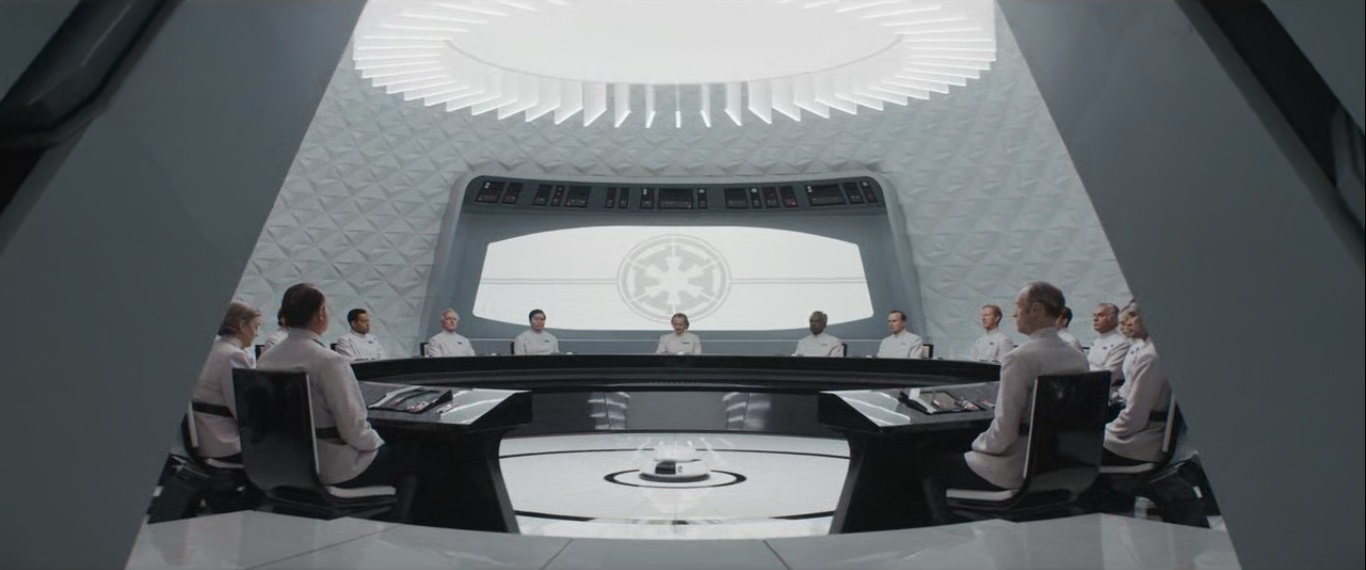
The independent power and influence of megacorporations was instrumental in the decline of the Republic, the instigation of the Clone Wars, and the rise of
the Empire, and was subsequently a linchpin of Imperial stability, particularly in the first decade of Imperial rule. Corporate planets and interstellar corporate
territories were ideal Imperial subjects, as they already embodied most aspects which the Empire sought to impose upon the galaxy at large, such as centralized
control, non-democratic leadership with a broad authority to dictate rights and restrictions over its citizens, and pragmatic goals of wealth and power rather
than ideological concerns which might limit their actions. Corporate domains kept internal order without the need for the expense of Imperial resources or
funds, and were fiercely loyal as their license to rule was contingent on an Imperial warrant. They served as a influential supporters of the early Imperial system,
as their already significant independence was initially expanded, with the Empire removing many of the remaining Republic restrictions on their activities and
methods. Their usefulness to the Empire put them towards the end of the Empire's list of targets, but would ultimately not protect them from full absorption
into the Imperial state. The Empire's policies are those of its Emperor, for whom allies are only pawns to be used and then discarded, as there is no intention to
share power with anyone. The authority enjoyed by corporate domains was also a responsibility, which the Empire could use against them without political
fallout in the event of "Corporate Security fiascoes" or other lapses. Such failures would provide easy pretext for a corporate domain's seizure by the state.

The Imperial response to the non-violent protests on Ghorman was to ignore calls for reform, to increase its security apparatus, and to institute sanctions and
economic punishments against the starsystem. This unnecessary overreaction will only lead to greater friction and conflict on Ghorman in the future, which
seems like a strategically unwise move on the part of the Empire unless one considers that fomenting conflict is at the heart of the Empire's ideological purpose,
plans, and procedures. It is the usual policy of any imperious state to threaten disobedient or independent-minded governments with economic coercion and
the use of force. Terrorism, which is the use or threat of violence indiscriminately against a civilian population with the aim of effecting social or political change,
is at the core of internal and external policy for any imperial state. Mon Mothma accurately assesses their actions against Ghorman as "the coarse and blatant
domination of a peaceful and faithful ally", and any impartial observer would conclude from the many Imperial actions of this nature that democracy in
the Empire is little more than a facade. The lack of serious concern for the plight of Ghorman in the Senate is not surprising, and not only because the Senate is
full of disconnected elites who are enjoying the benefits of the Empire. Palpatine's political allies held a strong minority in the Republic Senate, and his alter
ego Darth Sidious' alliances in the Senate gave him influence over another block of Senators who would be maneuvered to vote alongside Palpatine's block at
any critical juncture. Palpatine would therefore usually enjoy a majority vote in the Senate, while appearing somewhat non-threatening as the spokesman for
minority block, which also meant the only Senators which he had to directly answer to were those who were most closely aligned with his policies. Many of those
fueling his consensus building in the Senate had no idea that Sidious, who was assisting with their political and economic rise in exchange for votes, was actually
Chancellor Palpatine. Most of those puppet Senators were eventually replaced with ideologically compatible candidates, who would be direct Palpatine allies,
later in the Clone Wars and in the early Imperial era, as it became increasingly easy to manipulate the political machinery. As a result, the Emperor enjoys a firm
majority in the Senate, capable of overruling nearly any objection. Nevertheless, there are enough troublesome opposition Senators to keep undesirable
political discourse alive in the Senate, and occasionally even shift a vote against Palpatine's allies. These Senators cannot be easily replaced even by Palpatine's
many underhanded means, either because they have too firm a political standing or because they come from a politically important and long-entrenched
planet whose local government tradition has too much weight and momentum to be openly undermined. This includes a great many of the vital Core worlds,
whose formerly cooperative leaders would take great exception if the aristocratic leadership order of a world like Alderaan or Chandrila was forcibly replaced
by the Emperor, as their own worlds might later suffer the same treatment. These Senators are allowed to continue their troublesome opposition because it
usually has little effect and serves to portray the existence of democratic debate, but are also watched closely for anything that could be used to remove them.
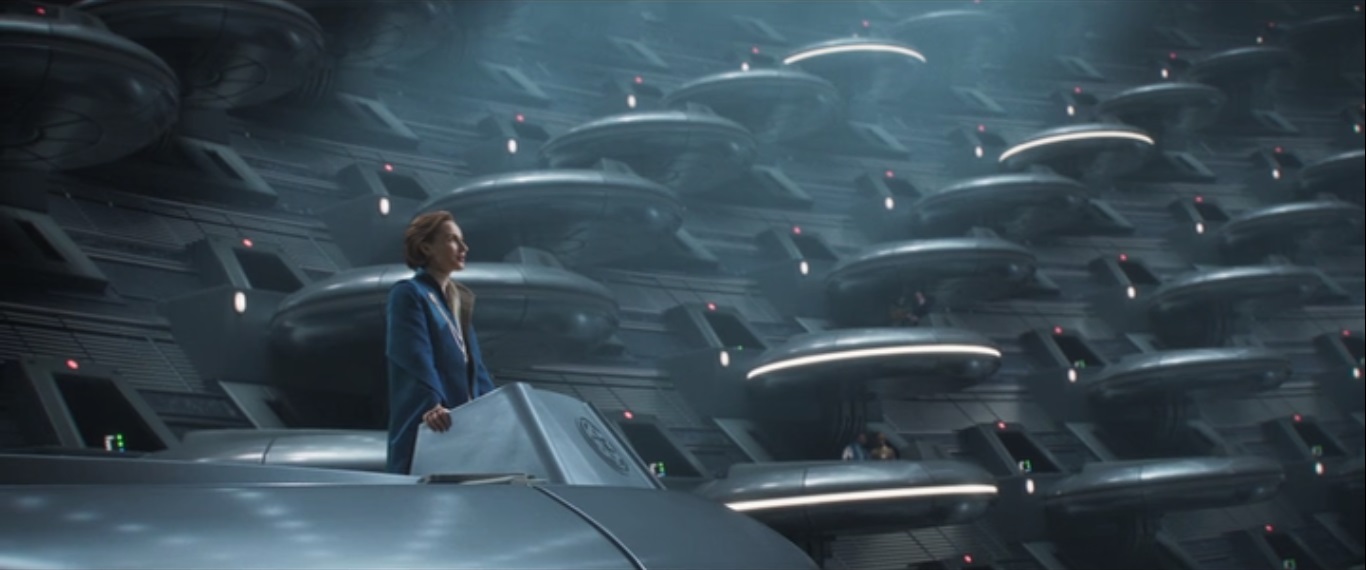
The Empire seeks to control worlds for their resources, strategic value, and to spread their domain, and like any successful empire they achieve this by dealing
with local populations in the most cost-effective manner available. This entails learning something about the local culture, politics, and society, and formulating
specified tactics in managing their cooperation. The Empire will proceed with its plans in the face of opposition as needed, but prefers to encourage populations
to choose to accept the Empire's presence and the changes they are instigating whether the people like it or not. As is often the case with empires, the leaders
of the Empire are elitist, self-important, and arrogant, who come from a civilization which is technologically superior and sees itself as culturally superior. Most
Imperial leaders look down on the average citizen of advanced Imperial core planets, and feel themselves to be all the more superior to 'backwards' cultures
typical of insular and agrarian worlds. The Empire's leaders see the Aldhani civilization as a "simple people" steeped in "ritual nonsense" whose destruction will
be "no great loss", but nonetheless are useful as laborers. Their sense of natural superiority is reinforced by the Dhanis' "great difficulty holding multiple ideas
simultaneously", suggesting that the jumbled mindsets of cosmopolitan, urban people is a hallmark of civilization, and the Dhanis' adherence to their cultural and
moral priorities is a sign of inferiority. This is diagnosed as the result of their pride in their inferior culture, which is said to "breed a sad combination of traits that
make them particularly vulnerable to manipulation." Their willingness to endure suffering for their beliefs, and the patience which they have shown the Empire
despite its offensive, intrusive, and manipulative treatment, are taken as evidence of their inferiority. The inherent elitism of Imperial philosophy sees their rule
over such 'primitive' people as natural, right, and proper. The Dhanis will be treated with hollow displays of respect so long as they accept Imperial authority,
ignore the Empire's appropriation of their sacred lands for resource development, and accept relocation to lands the Empire has reserved for them. Their culture
will gradually be subsumed and stripped of its meaning until its obstinate elements are adjusted to suit their role as subject laborers. Any society which will not
adapt to serve the Empire in this manner will be systematically crushed out of existence. The Dhanis, at least those with more cultural pride and spiritual priorities,
hold the Empire in great contempt as they recognize enough of the Empire's goals, have been treated to a series of Imperial offenses, and understand that
the Empire does not respect them at all. They tolerate the Imperial presence because they have no choice, as the Empire is technologically superior and cannot
be forced off their world despite being much fewer in number. Their compliance is out of pride in their culture, which they are seeking to preserve despite
the reality of the Imperial presence, as well as their good sense not to get most of their population slaughtered for the sake of that pride. Their insistence on
resisting the occupation by persevering, maintaining and passing on their culture and beliefs, and having children gives them a chance of outliving the Empire.
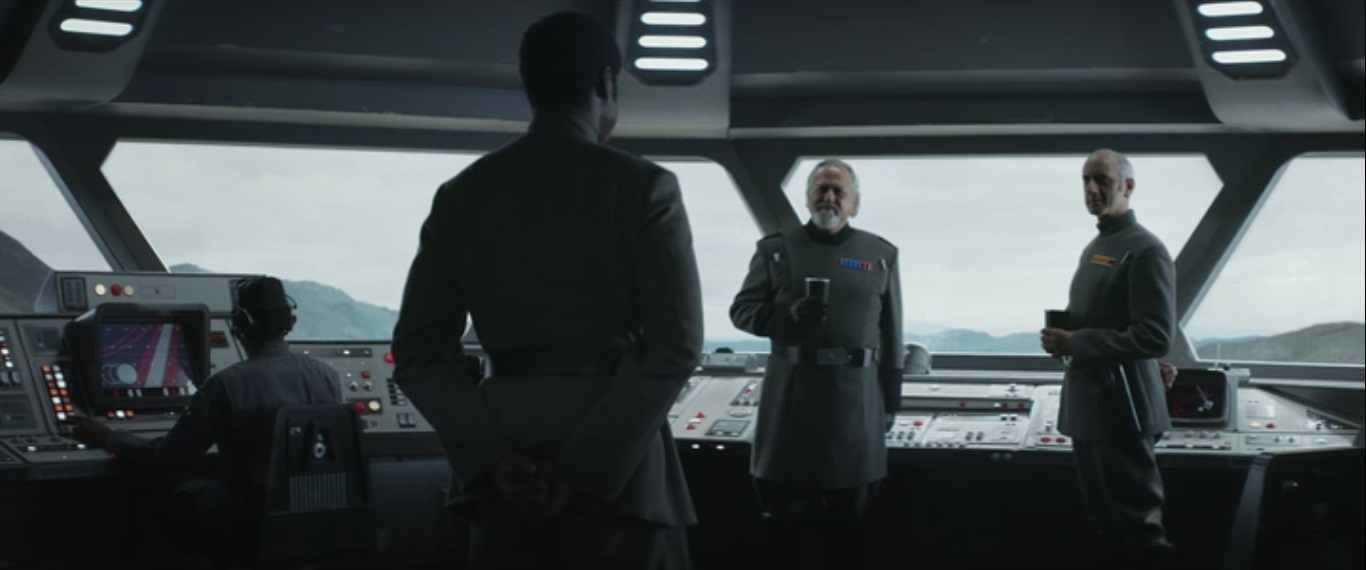
The robbery of Aldhani Base by rebel agents was seen as a critical escalation of threat by the Empire, not because of the value stolen, which was a minor loss
to the Empire, nor because of the failure of the Empire's security procedures, which must occasionally occur, but because of the brazen disrespect it showed
to the fearsome power of the Empire. No one in the galaxy should be bold enough to directly attack and seize control of an Imperial garrison protected by
a fighter base, and more importantly should not have the resources, talent, and coordination necessary to succeed. The fear of the Empire's retaliation should
keep anyone from trying this, so the fact that someone did suggests they have a functional network to retreat to after the fact. The Empire now looks vulnerable
and beatable, and its natural response will be to reassert the terror of its power in the minds of citizens by conducting overstated retaliations against uninvolved
parties, and proclaim that it has punished the guilty. This is a great success for the rebellion in terms of optics, however it has now drawn the attention of
the Empire to its growing capabilities which will undoubtedly lead to increased Imperial scrutiny and the potential exposure of their vulnerable network.
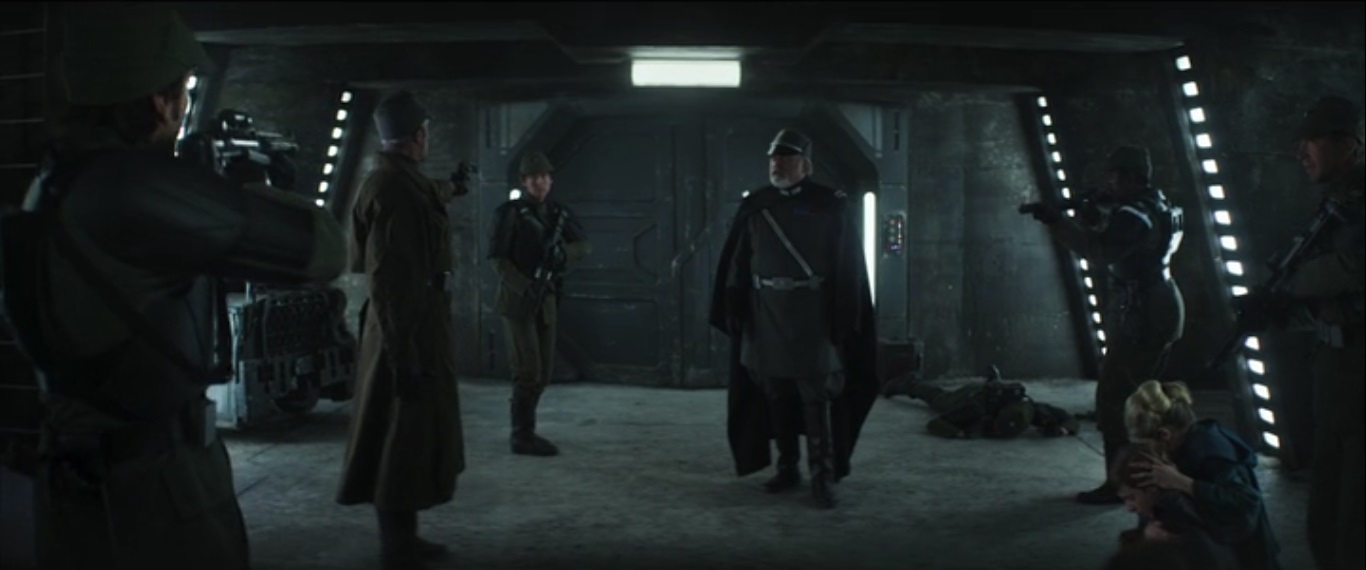
FURTHER ANALYSIS
Report Pending